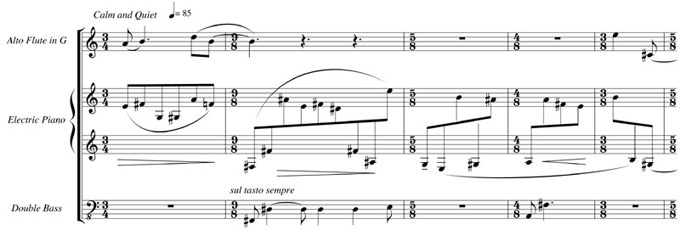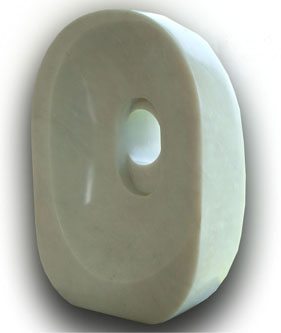[Introduction]
[Ascending Form]
[Quiet Form]
[Conversation with Magic Stones]
[Back to Rhythm of the Stones]

Quiet Form provides a still centre to a sequence of intensely rhythmic and contrapuntal music. Whilst no precise dynamics or articulations are marked the electric keyboard part in particular is made up of harmonic blocks whose resonance should ebb and flow. The alto flute part should be quietly expressive, savouring opportunities for colourful vibrato and articulation at a dynamic between pianissimo and mezzo-piano. The double bass part may be played arco or pizz or a mixture of the two, but predominantly sul tasto. Where possible, particularly in live performance, the performers might experiment with ghosting notes, even short phrases, so that the music appears to suddenly disappear in random moments between each part, although each player might ‘appear’ to be sounding it.
[Quiet Form]
[Conversation with Magic Stones]
[Back to Rhythm of the Stones]
Quiet Form
If I were quiet,
my form timeless
as polished marble
but fecund still,
between breast
and belly folded
arms would hide
my pierced body
where life lurks
to quicken, coiled
in shine and shiver
around the hole
through which spirit
must catch aquatic
air in mid-swim.
So quiet waits
life, quilted
in polished glow
of a stone torso,
for birth qualms.
– Margaret Morgan 2003
![]()

Downloads
Score [pdf]
Recording by BBCNOW trio [mp3]
Web presentation [swf]
